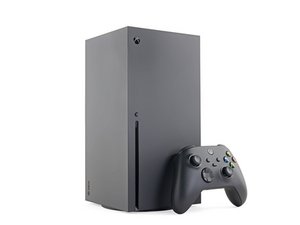First Steps
Often it is easy to forget the troubleshooting basics during times of frustration. Before attempting significant repairs for your device, check your console for the following.
- Check your system for any available updates: An up-to-date console ensures that your console receives essential bug fixes and system improvements that can prevent your system from overheating.
- Ensure your Xbox Series X is clean and oriented to allow airflow: The Xbox Series X is designed to allow for cool, fresh air to pass through the system from the bottom and spits hot air out from the top. If the vent at the top of the console is blocked, hot air will build up in the system.
- Avoid placing the console in enclosed spaces or on surfaces obstructing airflow, such as inside cabinets or soft materials like carpets. Keep 4-6 inches of open space between your console's vents and any objects.
- Now would also be a good time to make sure that the top and back vents of your Xbox are clean and free of dust and debris.
- Keep your Xbox away from any heat sources: For your Xbox to cool, it needs to be in a space where the ambient air temperature won't change drastically. The ideal room temperature for your Xbox should be around +5ºC (+41ºF) to +35ºC (+95ºF).
If these initial tips cannot resolve the issue, try some of the more in-depth troubleshooting tips below.
Causes
If you have multiple applications or games running at the same time, your Xbox could use more resources, resulting in your system running hotter than normal.
- Close any unused applications or games. Close background applications and games are not used to reduce strain on the system and should reduce the amount of heat generated by the system.
- You can also power off your system completely to shut down any potentially problematic applications causing the issue.
- Check your power consumption settings. In some instances, the issue could be caused by how your console's energy settings are configured. Try switching to energy-saving power mode and see if your Xbox continues overheating.
Low-quality or third-party accessories may not deliver the proper power or cooling required for optimal performance. For example, some third-party Xbox cooling fans can sometimes make the Xbox overheat because they divert the airflow to the wrong location.
- Remove any connected accessories, including external fans, hard drives, and charging accessories. Then, check your Xbox and see if the issue persists.
- Test your accessories if the issue has been resolved. If your console is no longer overheating, try plugging in your accessories one at a time to see if the issue happens with one particular accessory. If this is the case, consider looking at iFixit's extensive section on Xbox Accessories.
While your vents may be clean and free of dust, you could have an issue with dust and debris having built up in your Xbox's internal components. In addition to the steps detailed below, consider checking out the 'How to fix Xbox Series X overheating' iFixit guide.
- Turn off the console and unplug it from the power source.
- Use compressed air or more environmentally friendly options to clean the vents and fan gently.
- Be sure that the fan is clean and is spinning freely.

- 20 - 40 minutesModerate

$109.99
4.8
9 reviews

$4.99
4.9
235 reviews
If you frequently use your console, the issue may be caused by an overused system. Cooling periods should be taken to allow the console to cool down before further use.
- If you've been gaming for an extended period, consider taking breaks to allow the console to cool down.
- Please turn off the console during breaks to let it cool more efficiently. Ideally, you should wait an hour for it to cool down.
If you are still experiencing issues with your console, consider opening your Xbox Series X to see if there is any potential damage internally.
- Check the console's fan for any damage or warping. Make sure that your Xbox's cooling fan is spinning properly in its housing and is both connected and receiving power from the center chassis. If needed, replace the malfunctioning fan with a new one.
- Look at your Xbox's heatsink for dust build-up. Make sure that the heatsink's fins are clean and free of debris.
- Replace the thermal compound underneath the heatsink. Most thermal compounds become less effective over time, especially when used in a system with heavy use. Consider changing out your thermal compound if you have had your system for an extended period.
- Perform a thorough visual inspection of the console's boards for any signs of burns or damaged components. If you observe any visible damage, such as burns or components that appear to be physically damaged, the affected board likely needs to be replaced.

- 15 - 30 minutesModerate

- 20 - 40 minutesModerate

$29.99
5
9 reviews

$24.95
4.9
29 reviews
You're seeing solutions for Xbox Series X. Select your model to find parts for your device.





